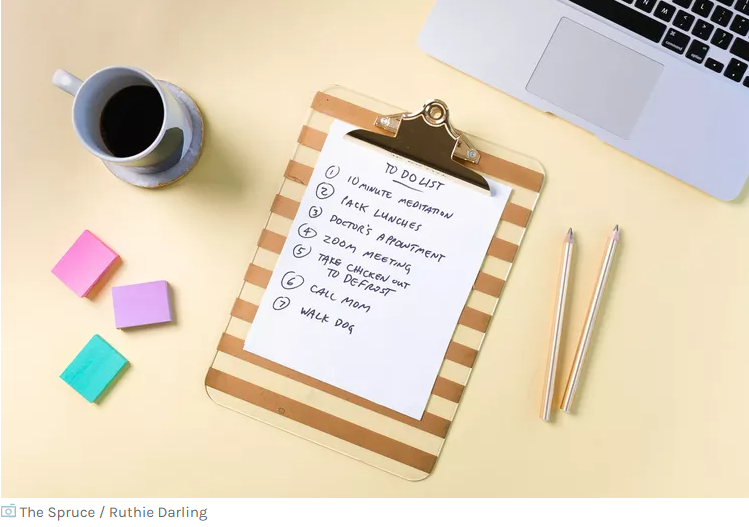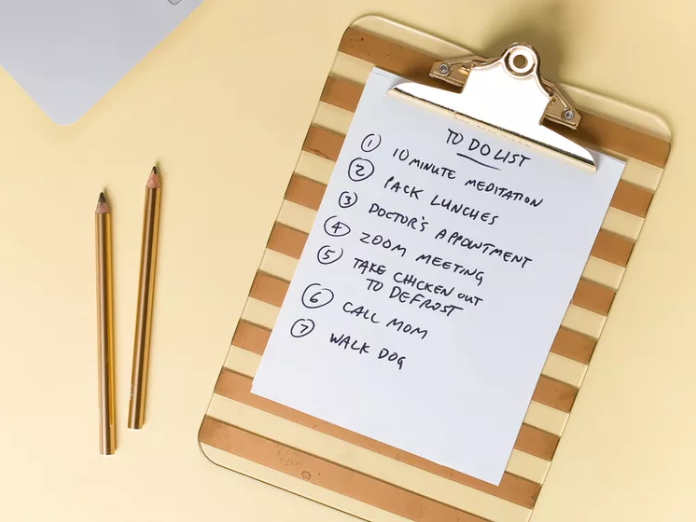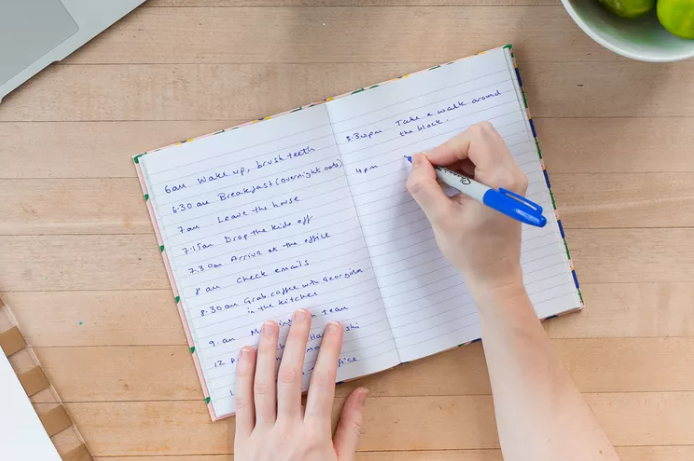No products in the cart.
5 Steps to Create a Personalized Daily Routine
Organizing Your Schedule and Sticking to It
By ELIZABETH LARKIN | Updated on 11/21/22
Reviewed by KATHERINE PICOTT

Figuring out how to create a daily routine that works for you—and how to stick to it—can take some time. What should the perfect daily routine contain? That depends on the individual. You need to figure out what you have to get done and when. But you also need to be honest about your lifestyle, including your bandwidth and time-management abilities, to create a reasonable work routine you can stick to.
Here are five steps to help you make a daily routine for yourself, even if you’ve never had one.
01 Make a List
Figuring out how to write a daily routine begins by writing down everything you need to get done daily, both at home and at work. Don’t worry about how you organize this list; this is a brain dump, not a to-do list. Simply jot down everything you do each day, as well as everything you should get done.
If you feel like it’s too hard to remember all the tasks in one sitting, carry around a notebook to take notes throughout the day. No task is too small—if you want to work “brush teeth” into your daily routine, put it on the list.

02 Structure Your Day
Early birds tend to get things done most effectively before lunchtime while night owls get their burst of energy in the evenings. Think about when you work best. Then, group your tasks into the time of day that makes the most sense for when you will efficiently complete them.
- Mornings: Mornings are often about getting out the door, which can be its own challenge. Group all your early tasks, such as feeding and walking pets, preparing breakfast, or putting dinner in the slow cooker. For the rest of the morning, consider tasks you’ll want to do while you’re still fresh. And think about tasks that you tend to dread or procrastinate. Schedule them for the morning, so they’re not looming over you all day.
- Midday: This is a tricky time of day because your energy levels—and perhaps the caffeine from your morning coffee—have likely dissipated. However, this means you might be primed to do the boring, routine stuff that doesn’t take a lot of brainpower. Use midday time for tasks like answering emails, setting appointments, and running errands. If you are based at home during the day, use this time for routine cleaning, such as emptying and loading the dishwasher or scrubbing the bathroom.
- Evening: Evenings work best when they’re used for planning and preparation for the next day. Lay out your clothes, pack lunches, and declutter the spaces that tend to be drop zones, such as mail piles.

03 Get Specific (Optional)
Within the loose outline of tasks for each part of your day, you can get as specific as you want. For example, you might want to write a daily morning routine that looks something like this:
- 6 a.m.: Wake up, shower
- 6:30: Breakfast, brush teeth
- 7: Leave the house
- 7:15: Drop off kids at school
- 7:30: Arrive at the office
That’s a very detailed daily routine example for an adult. But some people might prefer that level of detail—at least until they get the hang of the routine.

04 Schedule Time for Flexibility
The point of creating a daily routine is to harness your most productive hours to use for challenging tasks and your least productive hours for the more mundane tasks. But life can get in the way of even the most detailed routines. And you should plan for that by keeping some flexible free time within your routine.
For instance, you might have a doctor’s appointment during time you usually set aside for work. Or your evening time when you normally prepare the next day’s lunch might be taken up by a social gathering. Scheduling free time into your daily routine will help to keep things flowing smoothly in spite of atypical events. You’ll be able to shift around tasks and still get everything done without feeling pressed for time.

05 Test Drive Your New Routine
Once you’ve created your daily routine, take it for a test drive. How does it feel? Did you schedule your tasks at times that make sense? Do you need to adjust anything?
Commit to the routine for at least 30 days. And tweak any scheduling that isn’t working on a case-by-case basis. Once your tasks are slotted into the right spots, you should find sticking to your daily routine to be easier than you ever thought.

Creating a daily routine seems daunting at first. But you will soon reap the rewards when your productivity soars, morning meltdowns are reduced, and you find you actually have pockets of free time. Even better? Nothing is written in stone. As things in your life change, you can always tweak your daily routine, following the same steps you used to create your initial routine to help you form new and productive habits.
